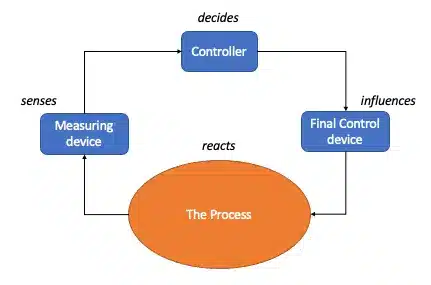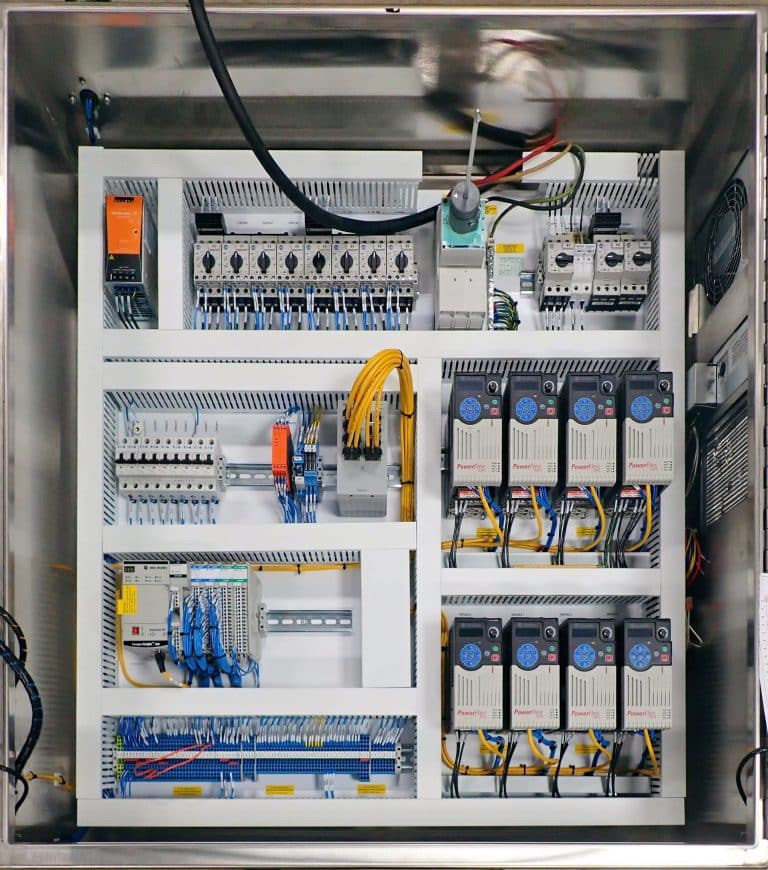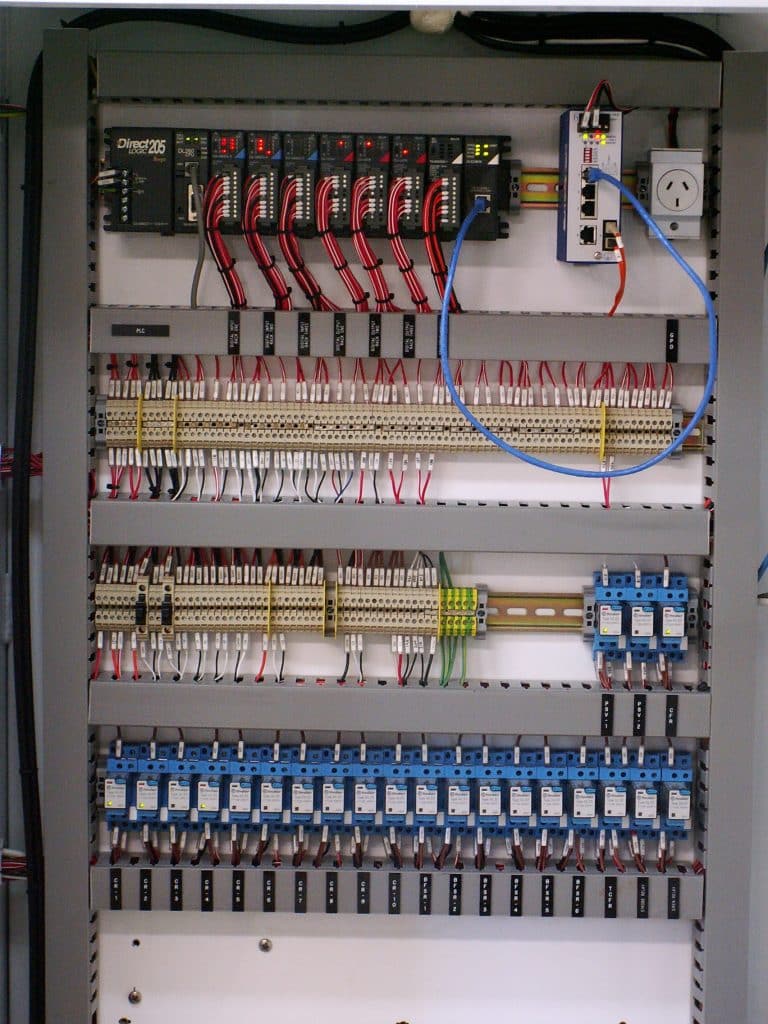Industrial Automation Services in Manteca, CA
Welcome to Access Industrial Automation - Your premier source for bespoke Industrial Automation Solutions in Manteca, California
At Access Industrial Automation, we specialize in tailoring top-tier solutions to diverse industries. Our seasoned engineers seamlessly integrate custom programming, ensuring an efficient automation ecosystem. Partner with us for unrivaled expertise, reliability, and innovation. Embark on a journey into the future of industrial automation through our state-of-the-art programming services, meticulously crafted to optimize operations, elevate precision, and propel productivity within manufacturing workflows. Discover the game-changing potential of automation technology and witness firsthand how Access Industrial Automation is poised to revolutionize your business processes.

What is Industrial Automation?
We define industrial automation, or as it is called sometimes factory automation, as the use of software and hardware to control machinery in a manufacturing environment. This often involves industrial Instrumentation which is the science of automated measurement and control. It is applied in many different fields, including research, industry, and everyday life. Examples include automobile engine control systems, thermostats, autopilots, and the manufacture of pharmaceutical drugs. Automation is all around us.
The first step needed to automate anything on the factory floor begins with measuring something. We need to measure what processes we have before we can begin to control it properly. This measurement typically includes:
- Fluid pressure
- Fluid flow
- Temperature readings
- Fluid Volume
- Concentration of Chemicals
- The position of machinery and equipment
- Counting of product or inventory
- Electrical voltage, current, or resistance
Once we have taken our measurements, we can then act upon the information we have obtained. This can be in the form of displaying the data so a human can make decisions and interact with that data, by manually controlling the equipment. Or, as is the case for most factory automation systems, the data can be used by a computer, in most cases a Programmable Logic Controller, to be acted upon by taking some kind of automated action. This action then influences the original data being measured through the manipulation of a final controlling device. This device can have many forms, but some of the most common are control valves, electric motors, heaters, etc.

Industrial Automation Solutions Near Me
Pretty much all homes have a thermostat. This is a great example of a measurement and control system, with the home’s internal air temperature being the process that is controlled. In this example, the thermostat usually serves two functions: sensing and controlling. The homes heating system is the final control device which then modifies the temperature being sensed by the thermostat. This control system has a single function: to maintain the room temperature. If the current temperature deviates from the desired level, either by heating or cooling, it takes action to correct it.
Taking this concept to the industrial factory floor there are more examples than we can mention here, but on such example might be a boiler water level control system.
Steam boilers are a common feature in industry because they offer a lot of utility. They can be used for mechanical work (e.g.: a steam engine moving some sort of machine), heat production, and to produce vacuums (thanks to the use of “steam ejectors”) and ‘augmenting' or improving chemical processes such as reforming natural gas into hydrogen and carbon dioxide.
To generate steam, just heat water until it boils. Lots of people know this process from cooking with a regular stove. Generating steam continuously is trickier than just one pot of water on the stove, though. One of the most important things to measure and maintain in a continuous boiler is the level of water within the “steam drum” (the upper vessel in a water-tube boiler). To get a continuous supply of steam, it's important to maintain the levels of water inside the drum. Make sure the levels never fall too low, or rise too high. If there isn't enough water in the drum, the burner might burn through the water tubes because the heat rises too high. On the other hand, if there's too much water in the drum, the steam generated will likely carry liquid water along with it which can cause problems downstream.
Remote Monitoring and Control: PLC systems enable remote monitoring and control of industrial processes, allowing businesses to manage their operations efficiently from anywhere in the world.

Industrial Automation Services in Manteca, California
We're experts in creating customized automation solutions for a wide range of industries. Our experienced engineers make sure your automation system runs smoothly and efficiently. Join us for unmatched knowledge, trustworthiness, and inventive solutions. Step into the future of automation with our cutting-edge services. We've designed them to improve how your business operates, making it more precise and productive. Experience the transformative power of our technology, and see how Access Industrial Automation can revolutionize your operations!
What is the Industrial Automation Pyramid?
If you don’t understand the Automation Pyramid, then it will be difficult for your company to stay competitive in today's rapidly changing manufacturing environment. Industry 4.0 or “Smart Factories", as they're sometimes called—that use digital technologies such a IOT sensors and robots - are becoming increasingly more common.
The Production Floor Layer - Layer 5
Beginning at the base layer of the pyramid, we have the production layer. This is where the industrial automation process happens as discussed above. Measurements are taken and acted upon. Valves, motors and other devices operate in order to influence the process where new measurements are take and the cycle is repeated many times over.
The Control Layer - Layer 4
As the process' in factories grow in size the typical PLC may no longer have the capability or processing power to control vast process. It these cases they may be replaced with DCS systems or Distributed Control systems. A DCS can be compared to a conductor of an orchestra. The orchestra itself is comprised of many moving parts, and on the factory floor may be comprised of many different PLC's controlling individual tasks. In the same way that the conductor organizes and keeps communication flowing between all the members of the orchestra, the DCS controls and oversees all the data being sent and received between the PLC's.
The Supervisory Layer - Layer 3
The third layer is where we find supervisory control and data acquisition (SCADA) systems, as well as human machine interfaces or HMIs. This part monitors process information through user interface displays in order to make sure everything runs smoothly from start up all throughout the production process; meanwhile crucial data is stored into databases for easy access later on.
The Planning MES layer - Layer 2
This layer provides managers with realtime data. It is a true 360 degree view into what is really happening on the plant floor. With this kind of data informed decisions about labor, performance, productivity, and other metrics can be made to improve upon any bottlenecks or problems as they become apparent.
The ERP management layer - Layer 1
While layer 2, the MES layer deals with data and planning from a single factory, the ERP layer deals with corporate wide data from multiple plant locations. This provides CEO and upper management ready access to metric's company wide helping to streamline decision making.

Lets get started on your next project!
Visit us at
1990 Foundry Ct. (Suite B)
Ceres CA. 95307